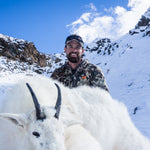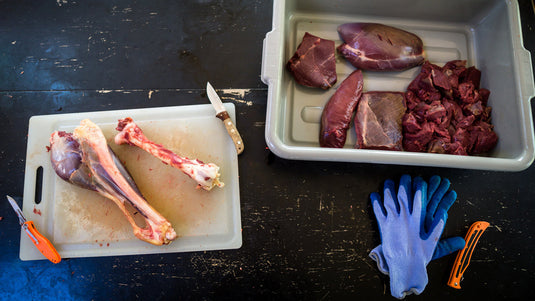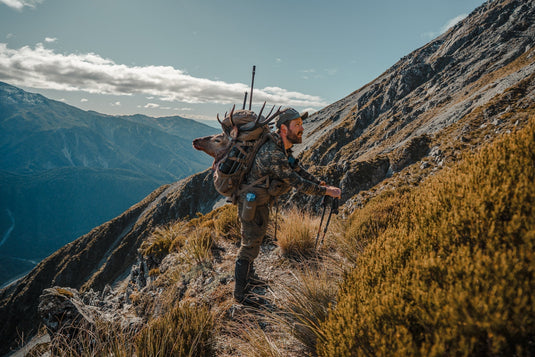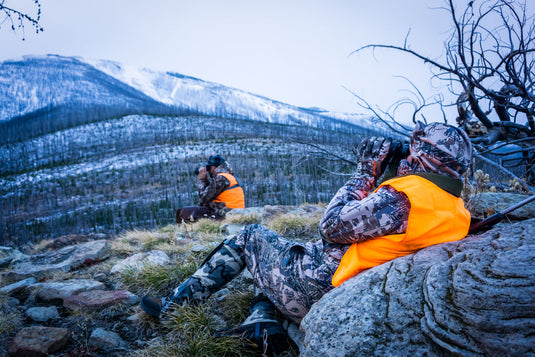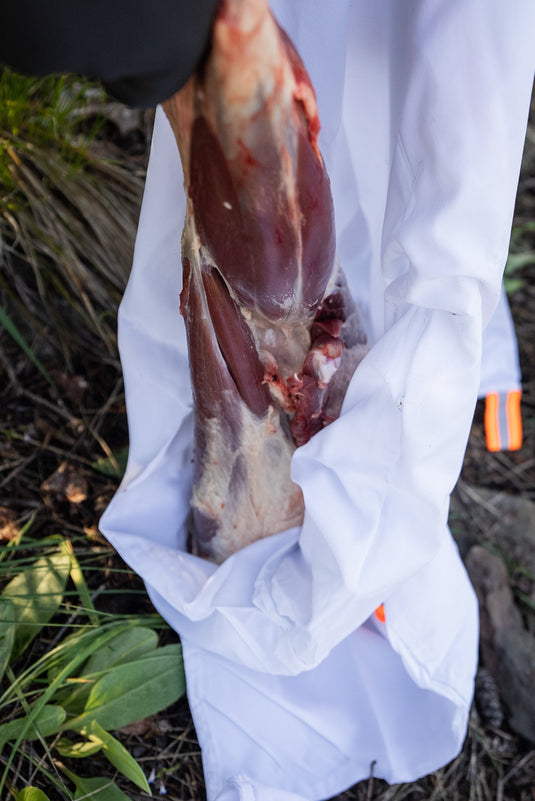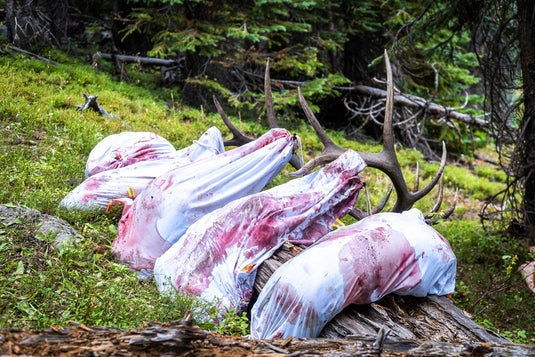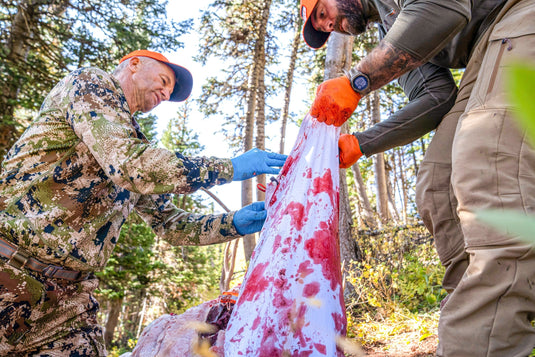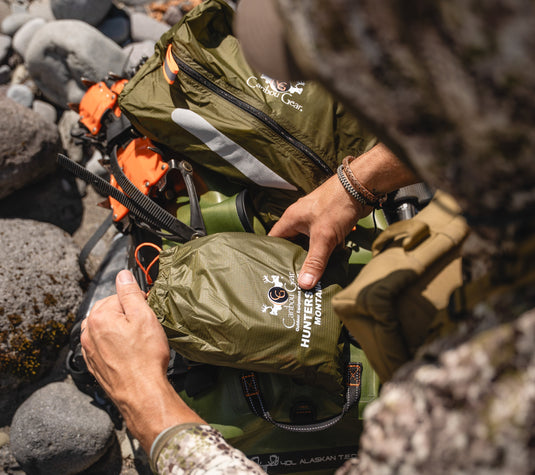What’s the next-best time of year after hunting season? It’s big game application season! From now through the spring and early summer months, we will be busy researching, studying maps and deciding on our application choices for big game hunts.
In case you missed it, go check out our previous article on this subject, 5 Ways to Start Planning for Next Season.
Almost as soon as one hunting season is over, it’s time to start planning the next. If you’re like us, the anticipation and the planning is a big part of the fun. Whether you’re applying in a single state or multiple western states for big game tags, here are a few ideas to help you plan more successful hunts this year…
1. ROTATE THROUGH YOUR PREFERENCE POINTS
One of the ways my friends and I maximize our quality opportunities is to rotate when we use our preference points. For example, in 2018 two of us had Colorado elk points that we wanted to burn. But rather than putting pressure on ourselves to kill two elk in one week, we decided to milk those opportunities for all they were worth. In 2018, my friend used his points on a quality elk tag. We focused on that hunt and he was able to take a nice bull. Then in 2019 I burned my points. He returned the favor and helped me pack out another nice bull.

Among our group of friends, we all have various levels of preference points for deer, elk, antelope and other species. By rotating when we burn our points for each species, we’re pretty much guaranteed at least one (usually multiple) quality hunts each year. When one of us draws a great tag, we try to help each other out. Not only does this allow us to go on some great hunts – it also increases our harvest success.
Hunting is a great team sport. If you’ve never been on a hunt without a weapon in your hand, it’s actually pretty darn fun. I get as much enjoyment out of being a spotter, pack mule, photographer and camp cook as I do when I’m the one carrying the bow or rifle.
So this year, consider making a plan with your hunting partners. Keeping in mind, all plans are flexible – after all, you never know when someone in your group will get lucky! Last year, one of my friends drew a mountain goat tag. We all shifted our plans to help him. You may need to call an audible once in a while. But make a general plan to alternate over the next few years and get the most out of every opportunity.
2. NARROW DOWN THE OPTIONS
Could going on fewer hunts actually lead to more success? Be careful not to spread yourself too thin. Look for success by focusing your efforts on the best options.
Elk, deer, antelope or bear? Early season, mid-season or late season? The number of options can be overwhelming. I like to start by looking at the calendar and prioritizing each part of the hunting season. What’s my number one priority for September? Next, what are my priorities during the middle part of the season? And finally, what do I want to be hunting in November and beyond?

For example, in September do you want to be chasing bugling elk or hiking after mule deer above Timberline? Depending on how generous your boss or your spouse is, it may not be realistic to do both - at least not very successfully. Instead, narrow down your options. Focus on one thing during each part of the season in order to be more effective. If you choose to do archery elk in September, then save your deer hunting for later in the season when you can focus on being successful.
Alternatively, you might enjoy hunting mule deer in velvet and then looking for big bull elk late in the year. Either way, start by narrowing down those options month-by-month or week-by-week through the season. With your distilled list of priorities, you can then focus on specific application options.
3. DO YOUR HOMEWORK
With your priorities in line for each part of the season, it’s time to begin doing your research. For each hunt of the season, I like to apply for at least one long-shot tag. That’s a hunt where my odds of drawing are low…but if I do draw, it could be an awesome hunt!
In addition to applying for at least one long-shot tag for each species, I’ll also have backup plans. Assuming I don’t draw the glory tag, where will I hunt?
For example, let’s say I want to do a pronghorn hunt. I’d start by applying for a great antelope tag with low draw odds – maybe that’s one of the top units in New Mexico. Or maybe it’s a controlled hunt in another state. The odds of drawing one of those premier antelope tags in many western states may be less than 10%.
With that in mind, I should also plan on applying for an easier–to-draw hunt. In Wyoming, there are units where I'd have a decent chance at drawing with few or no preference points. Or, I can always keep Colorado in my back pocket, where over-the-counter archery antelope licenses are available. Or if I have preference points saved, I could plan on using those to draw a license.

Where do you find your draw odds for each hunt and all the application information? You can’t beat the research tools offered by our friends at GoHunt. Join their Insider service and you’ll have it all at your fingertips.
When considering where to apply, I carefully cross reference each unit with information found on the state game and fish website, GoHunt, OnX Maps and Google Earth. Make sure you gather a complete picture of the area before you decide to apply.
Check out this previous article for a few ideas on e-scouting – how to select a unit and then how to scout it once you’ve decided where to apply.
4. WEIGH QUALITY VS. OPPORTUNITY HUNTS
When deciding on hunting applications, there’s usually a balance between quality and opportunity. The highest quality hunts are the most in-demand. Thus, they are usually very difficult to draw. On the other hand, some hunts offer an abundance of opportunity. These licenses are easy draw or can be purchased over the counter. But this abundance of opportunity usually comes at a cost – more hunting pressure, lower game density, lower trophy quality, difficult terrain, limited public access, or a combination of these factors.
When planning your applications, it helps to define your priorities. Are you willing to wait years or even decades for a very high quality hunt? Or, are you willing to sacrifice some quality for the opportunity to hunt more often?
Perhaps like a good investment strategy, a good application strategy can involve a combination of both those short-term and long-term goals. For example, if you’re applying in multiple states, you might apply in one state for that high quality experience. If and when you get lucky and draw, great! In the meantime, you might take advantage of opportunity hunts in another state.
If you only apply in one state, which would you prioritize? Would you rather wait for a tag that could lead to the trophy of a lifetime? Or, would you rather hunt more often, knowing you’ll sacrifice quality? There’s no right or wrong answer. But knowing the answer will help you decide where to apply – and ultimately be more successful in reaching your goals.

Making A Case for Opportunity Hunts
In most cases, I’m an opportunity hunter. And I’ll readily admit to being the world’s worst trophy hunter. I have plenty of proud grip-and-grin photos with little fork-horn bucks. But what my walls lack in record-book trophies, I’ve made up for in once in a lifetime experiences. By applying for lower demand hunts, I’ve been able to hunt a wide rage of species in several western states. While none of them will make the record books, I’ve been able to harvest deer, elk, antelope, moose, mountain goat and bighorn sheep, all in the past 10 years.
Taking a chance on opportunity hunts also means plenty of strike-outs. There have been no shortage of busts where tags went unfilled. But even on the most difficult hunts, I'd never define those trips as unsuccessful. The adventure has always been worth the effort.
If you’re willing trade some quality (trophy size, difficulty, etc.) for the opportunity to go hunting, then consider using that to your advantage when you apply in this year’s big game draws!
5. WHAT TO DO WITH FEW OR NO PREFERENCE POINTS
If you’re just getting into big game hunting or if you don’t have years worth of preference points saved, what are your options?
Here in Colorado our limited licenses are issued using a preference point system. Simplified, that means the applicant with the most points gets the tag. The highest quality elk units can take more than a decade to draw. Some take more than 20 years of preference points!
But don’t be discouraged. It’s just my humble opinion here – but I’m not sure any elk hunt is worth two decades of waiting. There are lots of great opportunities for applicants who are just now getting started! Again, for detailed draw odds and research, consider becoming a GoHunt Insider. Here are a few ideas to get you started:
Over The Counter Options
First, there are opportunities to purchase over-the-counter (OTC) licenses. Here in Colorado, hunters can purchase OTC licenses for elk. In Arizona, archery deer licenses are available over the counter. In many western states, black bear licenses are available over the counter. These OTC opportunities usually don’t boast very high success rates. However, they give you the opportunity to get out there and hunt.
Low Point Options
Next, hunters can find some great opportunities with just a handful of preference points. These may not provide the kind of quality you’d find in those super high quality units. But they can certainly provide an improvement over OTC hunt quality. Here in Colorado for example, there are a number of good hunts that require anywhere from zero to five preference points. In Wyoming, a nonresident can draw a general elk license in four years or less. Similarly in Montana, the elk combo and deer combo licenses allow you to hunt general units and are relatively easy for a nonresident to obtain. If you’re new to the game but you’re looking for something better than an OTC hunt, consider applying for one of these hunts that you can draw in less than five years.

Lottery States
Finally, you might consider applying in a state like New Mexico or Idaho where there are no preference point systems. In New Mexico for example, big game licenses are issued in a random lottery. If it’s your first year applying, you’ll have the same shot as everyone else.
6. CONSIDER AN ANTLERLESS HUNTING LICENSE
If you’re not hung up on antlers or horns, the big game world is your oyster. Antlerless tags are usually less expensive for nonresidents, they are often much easier to draw and the success rates are often higher. If you’re looking to fill the freezers this fall, consider applying for a female or antlerless hunting license.
Female harvest is usually tightly controlled by state game and fish agencies because the harvest of females has a far higher impact on herd population and dynamics than the harvest of males. Therefore, expect to apply in the limited draw for these opportunities. Even though you’ll have to apply, don’t let that process deter you. These tags are often much easier to draw than antlered tags in comparable high quality units.
Of course we all love those antlers or horns on the wall. They’re undeniably cool and they provide a unique keepsake and reminder of a memorable hunt. But if you’re willing to give that up and perhaps frame a photo instead, consider an antlerless tag. Your freezer might just benefit from that decision!

7. DON’T OVERLOOK BLACK BEAR HUNTS
When we talk about western hunting, elk, mule deer and pronghorn dominate the conversation. But if you’re looking to go hunting this year, you shouldn’t ignore the opportunity to hunt black bears. The tags are easy to obtain, the skull and hides make great trophies, and the meat and fat can be delicious.
Here in Colorado for example, nonresidents can purchase a black bear license for a little over $100. That’s one of the best deals on a nonresident big game license anywhere in the west. And black bear numbers are strong all over the state – in many areas bear numbers are over objective.
The best time to hunt black bears is in early fall during hyperphagia, when they are constantly feeding to put on fat for the winter. Colorado offers September archery and rifle bear seasons during this prime time. Elk and deer hunters can also add on a concurrent bear license in many units.
If you’re looking for a great western hunting opportunity with a far lower price tag than a typical nonresident elk or mule deer license, a fall bear hunt might be the perfect fit!
8. FINALIZE YOUR APPLICATION PLAN
With priorities set and units researched, it’s time to put that application strategy in place. For each hunt, I have my plan A, which is probably a long shot. Then, I have my backup plans – those hunts with better draw odds or even over-the-counter options.
Going into the draw there are many variables. You might draw one of those incredible tags. However, you should have a pretty clear picture of your hunting season. If you’ve done your homework, there’s no reason you should be the one saying, “I didn’t draw anything this year!”
Go into next season knowing you can hunt at least a couple of the species on your wish list! Make a plan, and make it a year to remember.

Hunting Gear for the Adventure
As you plan your big game applications and fall hunting adventures, check out all the great gear we offer here at Caribou Gear. The equipment we choose to carry in our store is the gear that we personally use in the field. From Kenetrek boots to Jet Boil stove systems and everything in between, we’ve used it, tested it and it’s what we recommend.
If you have questions about gear for the upcoming season, please don’t hesitate to ask. We’d love to help you prepare for your next great adventure!

By Ryan McSparran
